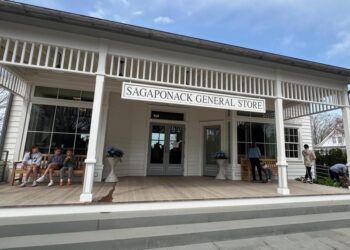The coastal devastation caused by Hurricane Sandy left many wondering about the resilience of the New York/New Jersey beaches, and what affect this instability would have on the tourism-fueled economy. Congressman Tim Bishop announced that the federal government has approved the process of rebuilding heavily eroded coastlines in South Fork, including the beaches of Montauk. These measures will be implemented as part of the Fire Island to Montauk Point (FIMP) Reformulation Study. The $700 million of federal money intended for the implementation of FIMP has not yet been specifically allocated, but the US Army Corps of Engineers’ will be working with the most heavily affected areas to create a comprehensive recovery plan.
Most of the officials in the South Fork area have received this news with a kind of exhausted relief, and while the words they used to express their relief varied slightly, the reactions were essentially identical.
New York Senator Ken LaValle acknowledged, “So much of Long Island’s economy depends on tourism and recreation. Jobs depend on tourist dollars, and also on the local stores, restaurants, inns and hotels and recreational boaters and fishermen in the area. Rebuilding our beaches and shores is not only about protecting our beaches, but also about protecting our economy.”
Assemblyman Fred W. Thiele seconded this opinion, saying, “Our coastlines, the crux of the East End’s economy, were severely impacted by Superstorm Sandy. This funding will allow us to address the serious erosion issues Montauk is facing in the immediate future, as well as providing a long-term solution to ensuring a more resilient coastline.”
These sentiments were once again echoed by Suffolk County Legislator Jay Schneiderman who said, “areas such as Montauk are important to our economy and our beaches are not only a tourist attraction but they provide important protective barriers to residential and commercial areas during storms.”
In the same vein of thought, East Hampton Town Supervisor Bill Wilkinson reflected, “Sandy painfully highlighted the vulnerability of downtown Montauk. The global attraction of these beaches are an economic asset to all of New York.”
While all of the officials highlighted the enormous importance of the local beaches in sustaining the tourism industry and general economic well-being of the entire Hamptons area, and most of them took care to specifically thank Bishop’s tireless work in their official statements, none of them seemed to take the situation quite as optimistically as Congressman Bishop. In response to the news, he said, “Superstorm Sandy was a once-in-a-generation storm that dealt a heavy blow to Downtown Montauk and other areas along the South Shore, but it has provided a unique opportunity to secure a stronger and more resilient coastline for the long term at 100 percent federal expense.”
The silver lining in this situation, which Bishop seems peculiarly uniquely attuned to, is the opportunity this affords the South Fork area. There is a strong possibility that with the federal government’s financial and engineering aid, the Montauk beaches will emerge from this unfortunate trial as an even more desirable tourist destination than before, with absolutely no cost to the local community.
While Hurricane Sandy was undeniably a devastating tragedy, the future of the Hampton beaches and their ability to sustain the local communities are no longer in question. Thanks largely to the hard work and perseverance of Congressman Tim Bishop, residents and visitors of Montauk can expect to see the recovery, and hopefully the eventual improvement, of the South Fork coastline.
More information can be found on the USACE website www.nan.usace.army.mil.






